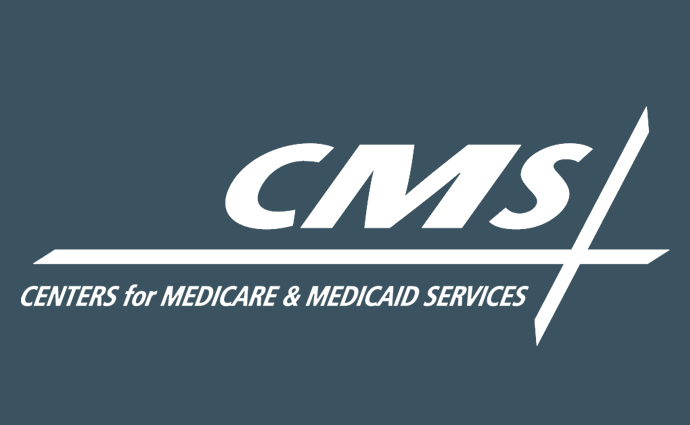98% of Eligible Clinicians Avoided a MIPS Penalty in 2018
Nearly all eligible clinicians avoiding a MIPS penalty earned a positive adjustment, with a higher portion also receiving special scoring for MIPS APM participation, CMS reports.

Source: Centers for Medicare & Medicaid Services
- About 98 percent of eligible clinicians avoided a penalty under the Merit-Based Incentive Payment System (MIPS) in 2018, and almost all of these clinicians earned a positive payment adjustment, CMS recently reported.
The federal agency released the 2018 Quality Payment Program Experience Report on Tuesday, revealing MIPS participation, scoring, and payment data for the program’s second performance year.
The report showed that an overwhelming majority of clinicians eligible to participate in MIPS in 2018 did so despite changes that decreased the number of eligible clinicians that year, such as new low volume thresholds.
In 2018, a total of 889,995 clinicians were eligible to participate in MIPS, CMS said in the report. Of these, 874,515 clinicians, or 98 percent, participated in the program.
For nearly all of the clinicians eligible to participate in MIPS, participation translated to a modest positive payment adjustment for the 2020 payment year.
READ MORE: Clinicians to Earn MIPS Credit for Joining COVID-19 Clinical Trial
The report showed that 119,141 eligible clinicians, or 13 percent of all eligible clinicians, met the program’s threshold for a regular positive payment adjustment (15 to 69.99 points). Payment adjustments for these clinicians ranged from 0 percent to 0.20 percent.
The majority of those qualifying for a positive payment adjustment earned the exceptional performance bonus in 2018. Over 84 percent of MIPS eligible clinicians, or 749,016 eligible clinicians, earned 70 or more points, resulting in positive payment adjustments ranging from 0.20 percent to 1.68 percent.
Additionally, there were 3,991 MIPS eligible clinicians who scored the performance threshold of 15 points and, therefore, received a neutral adjustment.
The remaining 17,847 eligible clinicians scored below the performance threshold and earned a negative payment adjustment between -5.0 percent to -0.01 percent.
According to federal law, MIPS eligible clinicians were able to earn up to a 5 percent positive payment adjustment in 2018. But due to budget neutrality limitations, CMS had to apply a scaling factor, resulting in more modest positive payment adjustments, the agency reported.
READ MORE: Maximizing MIPS Scores Through Chronic Disease Prevention
Despite smaller positive payment adjustments, CMS highlighted the success of small and rural practices in the program.
In 2018, 84 percent of small practices and 97 percent of rural practices earned a positive payment adjustment, representing an improvement from 74 percent of small practices and 93 percent of rural practices the previous performance period.
MIPS eligible clinicians in rural practices earned a mean score of 85.99 points, while small practices earned a mean score of 65.69 points. The national mean was 86.96 points in 2018.
“These results suggest that clinicians in small and rural practices can still successfully participate in the program. We will continue to connect clinicians in small (especially solo clinicians) and rural practices to our Small, Underserved, and Rural Support initiative both now and in future years to reduce barriers, identify areas for improvement, and drive success in future program years,” CMS stated in the reported.
The participation rate for clinicians in small practices increased from 81 percent in 2017 to almost 88 percent, which was primarily due to the increase in low-volume thresholds in 2018 (from $30,000 to $90,000 in charges and from 100 to 200 in patient volume).
READ MORE: Developing a 2018 MIPS Reporting Strategy to Avoid a Penalty
Additionally, the report showed that the Quality Payment Program is making progress with moving MIPS eligible clinicians to alternative payment models (APMs).
In 2018, 41 percent of MIPS eligible clinicians received their final scores for participation as part of a MIPS APM. That percentage was up from just over a third (34 percent) of MIPS eligible clinicians in the previous performance period.
Most of these MIPS eligible clinicians (351,686) participated in the Medicare Shared Savings Program in 2018. Other models that year included Oncology Care Model (6,206 MIPS eligible clinicians), Comprehensive Primary Care Plus (496), Next Generation ACO Model (42), and Comprehensive ESRD Care Model (28).
MIPS APM clinicians receive special scoring under the Quality Payment Program track.
CMS noted in the report that one of its “foremost goals under the Quality Payment Program is to encourage movement of clinicians and practices into APMs and Advanced APMs and ultimately toward a value-based system of care.”
Advanced APMs is the Quality Payment Program’s other participation track. The track includes alternative payment models that require participants to use certified EHR technology, provide payment for covered professional services based on quality measures comparable to those in MIPS, and either is an expanded medical home model or requires participants to bear significant financial risk.
Eligible clinicians can earn greater incentive payments – 5 percent in 2018 – if they participate in an approved Advanced APM.
In 2018, the number of eligible clinicians qualifying as an Advanced APM participant nearly doubled, from the 2017 total of 99,076 to 183,306 clinicians, CMS reported. Forty-seven eligible clinicians partly qualified.
“The increase in Advanced APM participation in 2018 reflects an increase in clinicians who provide high quality and cost-efficient care while moving towards value-based payments through Advanced APM participation,” CMS Administrator Seema Verma wrote in an earlier blog post detailing preliminary Quality Payment Program participation data for 2018.
CMS reiterated in the official report that it will take lessons learned from the first two years of the program, along with clinicians’ experience and feedback, to improve MIPS.
“As we look to the future of MIPS, we envision a continued partnership with stakeholders to develop a more streamlined program with better alignment between the measures and activities available for the different performance categories,” the report concluded.
